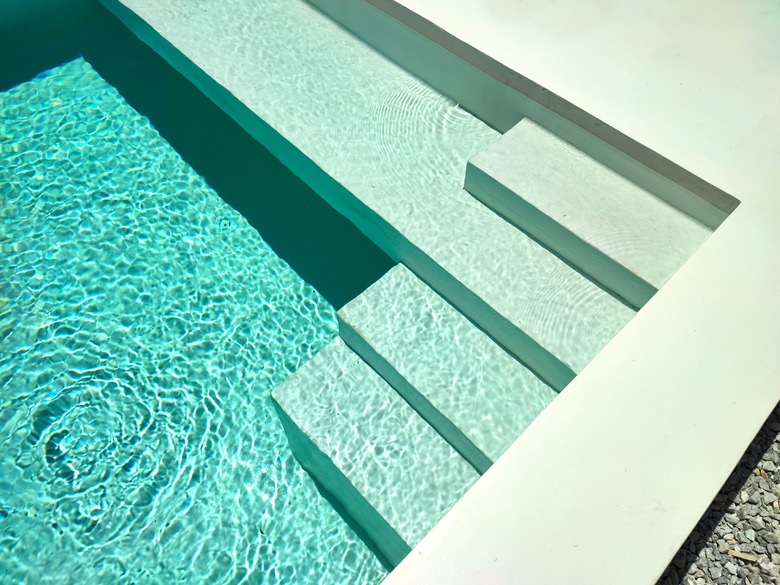How To Make A Pool More Shallow
We may receive a commission on purchases made from links.
As a family grows, the need for a deep diving pool may fade, and making the pool shallower may make sense. A shallow pool is a more useful, cost-effective way to relax in your backyard. There's less water to treat, and it's possibly even a little cheaper on your homeowners insurance. Transforming your diving pool into a recreational pool can add benefits for years and not break the bank.
Diving Pool vs. Recreational Pool
Diving Pool vs. Recreational Pool
As defined by pool experts, a diving pool is one that is engineered to safely utilize a diving board with the use of a deep end that transitions to a shallow end. A recreational pool will not allow a swimmer to safely dive into the pool. It allows a swimmer to swim and enjoy the pool and has a standard depth of 3 to 5 feet.
Different Strokes for a Shallower Pool
Different Strokes for a Shallower Pool
As with any project, making a pool shallower will require some consideration. Reshaping and reconstruction can be done to almost any pool with time and money. It's easiest and cheapest to make minor changes to pools with a vinyl liner. Vinyl pools can be made up to 2 feet shallower by simply removing the water and liner, filling and reforming with the appropriate materials, and then relining the pool with a new liner fit for a shallower pool.
Some other types of pool structures can also be simply filled to a desired depth. Regardless of the type of pool structure, the suction piping at the bottom of the deep end will need to be raised to the new depth. When undergoing any remodel, there are considerations that need to be taken to comply with any modern codes. Some of these codes may not have existed when the pool was originally installed, and the pool will require upgrades.
Shallow Water Safety
Shallow Water Safety
One consideration when filling in the deep end of a diving pool is the diving board itself. For obvious safety reasons, the diving board will have to be permanently removed. Consider contacting your homeowners insurance company and letting them know the intent of your project. It might help save a little money by reclassifying your pool.
While letting others know what is going on, the local building official might be a great resource to keep you in compliance with the local codes. You will need to have a permit for this remodeling project.
Filling Material Considerations
Filling Material Considerations
When making a pool more shallow, using the right filler is important. A pool filled with water can exert a great deal of pressure on the floors and walls of the pool. This requires the use of a filling material that can withstand the pressure without movement. Using simple sand alone as backfill will cause problems that can result in bulges and even leaks. This is why the most commonly used materials are a concrete and vermiculite blend to form the floor of the pool.
What About the Liner?
What About the Liner?
Once the water is drained, the pool is tamped and formed to make it shallower, and any necessary plumbing upgrades are in place, it is time for the liner. To measure the liner, you will need some assistance. Measure in multiple locations and determine the slopes and total depths of the pool. Every pool is different, and the liner is not an off-the-rack type of item. It might be best to consult with a pool professional or a pool supply company that will have a form you can fill out to easily get the proper measurements.
